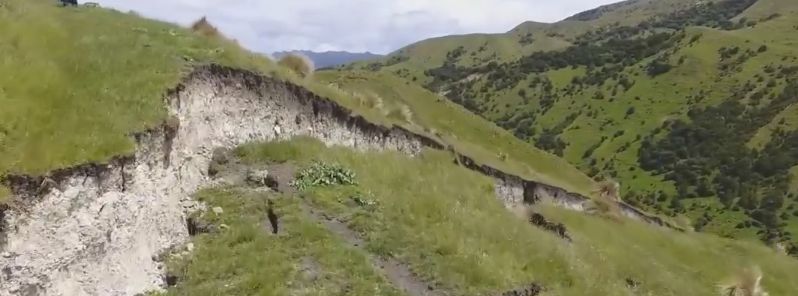Silent earthquakes follow major Kaikoura event, caution advised

The GNS Science, New Zealand has detected a series of 'slow slip' motions between tectonic plates in the lower North Island. The experts warn this may mean the chances for future large earthquakes have increased, despite the lower number of aftershocks which followed the M7.8 Kaikoura earthquake that occurred on November 14, 2016.
According to the scientists, an area where the Pacific and Australian plates collide, the Hikurangi subduction zone situated in Gisborne-Hawke's Bay, experienced a slip of about 15 cm (5.9 inches) over the last two week, which is equivalent to a slow-motion M7.2 quake.
Slow slip motions have also been observed in the regions of the Kapiti and Manawatu, according to the GeoNet GPS experts. The boundaries have experienced a slip between 5 and 7 cm (1.96 and 2.76 inches) over the last two weeks, which is equivalent to an M6.8 earthquake.The plate boundaries are currently still moving.
The slow slip motions, also named the 'silent earthquakes', are similar to earthquakes, except they include more rapid motions across the faults, and they occur over several weeks or months, not in only a few seconds. Such motions have been discovered in 2002, and this is the first so many of them were registered at the same time across the North Island since then.
According to Laura Wallace, a GNS geophysicist, the slip in the Gisborne-Hawke's Bay is likely responsible for inducing the moderate earthquakes offshore Porangahau, as well as the M5.1 quake that occurred north of Wairoa on November 26.
The slow slips usually produce about 10 cm slips (3.8 inches) along the plate boundaries. However, the one detected offshore Porangahau is bigger than that. Also, this appears to be the first time that a large earthquake has induced slow-slip motion in the North Island. The Hikurangi subduction zone is well known for the slow slip events, in general.
Video credit: Ruptly TV
Video credit: GNS Science
“Most areas where we have observed slow-slip in the past are slipping right now. We think the Kaikoura earthquake set them off. Very small changes in stress may have triggered the slow-slip events. We have never monitored slow-slip following a central New Zealand earthquake as big as the magnitude 7.8 Kaikoura earthquake, so it might be typical following big earthquakes in the center of the country,” explained Dr. Wallace.
The last 'silent earthquake' offshore of Gisborne was detected after the Te Araroa quake occurred in September 2016. Such an event has also taken place after the M6.7 quake struck Gisborne in 2007.
The scientists still don't understand the connection between the large earthquakes and slow slip motions, although it is known that such slow motions can induce earthquakes between M4.0 and M5.0.
A huge international project, led by the GNS, is planned to start in 2018 to investigate the relationship between the slow slip motion and earthquakes. As a part of the study, the experts will drill boreholes into the Hikurangi fault to install the monitoring equipment.
According to Gerry Brownlee, the Civil Defence Minister, the detected increase of slow slip movements suggests the increase in uncertainty about the likelihood and size of the future earthquakes. He encouraged the citizens to have a household plan, ready water, and food supplies, and be prepared to swiftly evacuate in case a strong quake occurs.
"While it's not scientifically possible to predict future earthquakes, this ongoing seismic activity is a reminder to us all that we live in a seismically active country and should always be prepared for a major earthquake," said Mr. Brownlee.
Featured image: Fault rupture following the Kaikoura earthquake, New Zealand. Image credit: GNS Science

Commenting rules and guidelines
We value the thoughts and opinions of our readers and welcome healthy discussions on our website. In order to maintain a respectful and positive community, we ask that all commenters follow these rules.